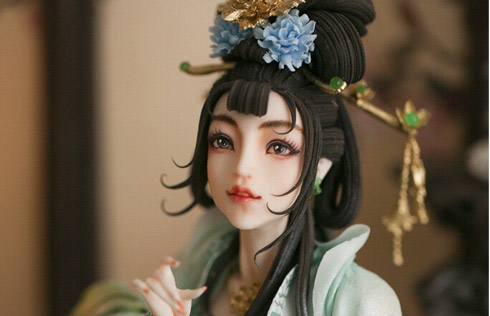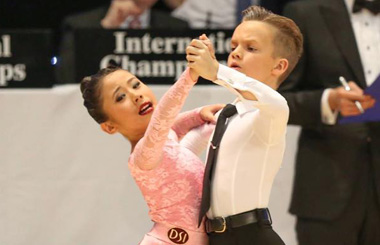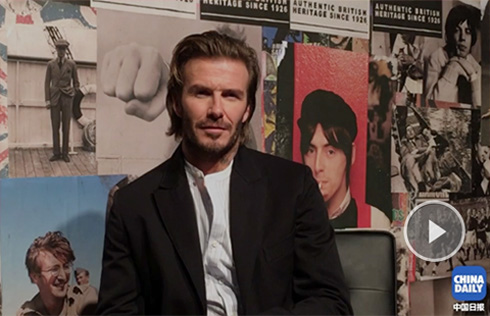Modernization, a double-edged sword for Tibetan Buddhist monasteries
In the past five years, spending every day chanting sutras and accompanying an old abbot in a small monastery has made Losang Samdan feel lonely.
Fortunately, a portable DVD player that supports cable TV functions and a mobile phone has enabled the 40-year-old Tibetan Buddhist monk to keep updated with the ever-changing world.
"TV news said that Beijing had the latest winter snowfall in the past 60 years, is that true?" Losang raised the question in the interview, after hearing that a Xinhua reporter had come from Beijing.
The Chorten Ki Temple, Losang's home, is perched halfway up a mountain in northwest China's Qinghai Province, which has the second largest Tibetan community in China.
Although the knowledgeable monk was delighted to communicate with visitors from the outside world, such opportunities were scarce in a monastery that had only two monks.
Unlike the remote Chorten Ki Monastery, the Taer Monastery, located 20 kms from the provincial capital of Xining City, always sees a massive influx of tourists and pilgrims during the whole year.
"In Tibetan, the word 'monastery' means a remote and unworldly place, but the trend of modernization is irresistible," said Gyaltsen Wangden, deputy head of the executive committee of the Taer Monastery.
The Taer Monastery was built at the birthplace of Tsongkhaba (1357-1419), the founder of the Gelug Sect of Tibetan Buddhism.
Last year, the Taer Monastery reported revenues in ticket sales of 36 million yuan (about 5.48 million U.S. dollars). The money was used to pay every monk about 10,000 yuan in living allowances and to maintain the monastery's buildings.
In 2010, the per capita net income of farmers and herdsmen in Qinghai was 3,863 yuan, said the National Bureau of Statistics.
Besides allowances, the monks can earn extra income by chanting prayers for families of Tibetan Buddhist believers.
In the prominent monastery, which has a history of over 600 years, monks have adapted well to the modern lifestyle.
During break time from studying and debating scriptures, monks take out their cell phones from cassocks to call friends. Some wealthy monks have purchased digital cameras, computers and even cars.
They are no longer hesitant when talking with tourists; some bold monks even dare to request photos with foreign visitors.
"At least 70 percent of monks in the monastery have a cell phone, and many of them are able to surf the Internet in their dorms,"said Gyaltsen Wangden, adding that he was a sophisticated net user.
"I often check the prices of construction materials, such as steel bars, timber and cement on the Internet to prevent being cheated by suppliers," Gyaltsen said. He is in charge of maintenance projects in the monastery.
Now, more than 40,000 monks in about 600 Tibetan Buddhist monasteries in Qinghai have signed up for medical insurance. Further, elderly and disabled monks enjoy a monthly subsidy of 200 yuan.
"There is nothing wrong if monks lead a well-off life. Being a monk does not mean life-long self-torture," Gyaltsen said in response to criticisms over the monks' modern lifestyle.
However, the modernization has brought not only benefits, but also challenges to the monastery.
Twenty years ago, the monastery only had some lamps for lighting. Now, the consumption of electricity is surging with the use of all kinds of electronic appliances.
"The monthly electric fees in the monastery has reached 24,000 yuan, which is exclusive of the spending of 290 monk dorms," Gyaltsen said.
Also, the rising prices of ancient-style construction materials dwarf the seemingly considerable budget for maintenance work.
"Nowadays, a quality tile costs 50 yuan, compared with five yuan several years ago," he said.
Further, mounting secular temptations have led some young monks to indulge in entertainment activities such as surfing the Internet, watching movies and skating.
Tsongkang Rinpoche, a living Buddha in the Taer Monastery, told Xinhua that "some young monks can't study scriptures attentively and have failed the annual exams in Tibetan language and scripture debating for five years in a row."
The monastery has never expelled such monks, but some just left secretly, said the living Buddha.
Yinba Gyaincog, a butter sculptor in the monastery, worries about the future of exquisite Tibetan handicrafts that are usually placed in front of Buddha sculptures in monasteries.
"The kids are smart. However, since their living conditions have greatly improved, they can't bear the hardship to learn the skills," he said.
Since butter easily melts when heated, the sculptors have to soak their hands in cold water to keep their hands and bodies cold.
To tackle these challenges, Gyaltsen said that they would implement their precepts while strictly and actively coaching young monks. "But there is no reason to blame modernization."
"A person living in the society can't prevent himself from being influenced by modernization," said Ma Lianlong, a senior researcher in religious studies with the Qinghai Academy of Social Sciences.
Also, advanced communication technologies have been playing an important role in promoting Buddhist doctrines and cultures, Ma said.
He believes that Tibetan Buddhism and modernization can co-exist in harmony.
In fact, the balance between religion and modernization can be easily seen in the everyday life of ordinary Tibetan people.
In some prominent monasteries in Qinghai, a Xinhua reporter saw well-groomed and fashionable Tibetan youths devoutly turning prayer wheels and kowtowing day after day.
Ma added that Tibetan Buddhism would definitely continue to be the top spiritual pursuit of the Tibetan people as mental peace became more valuable during the economic boom.






















